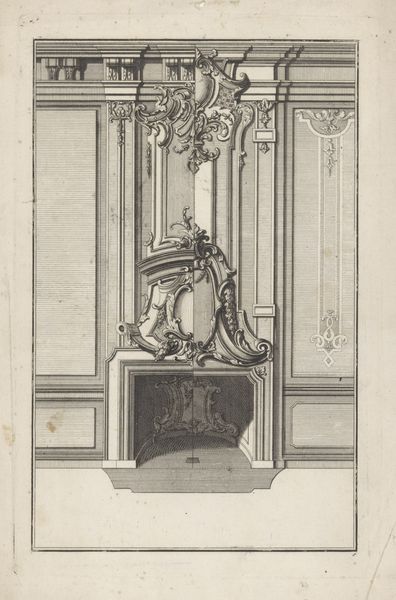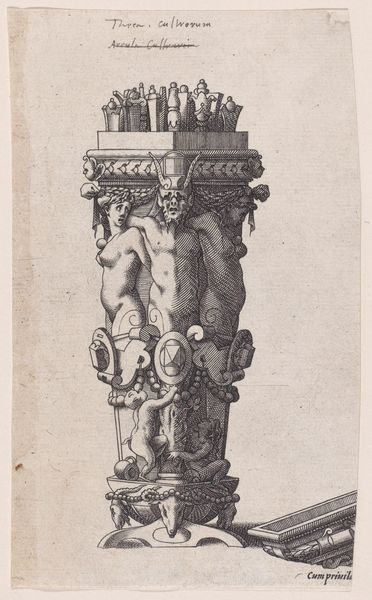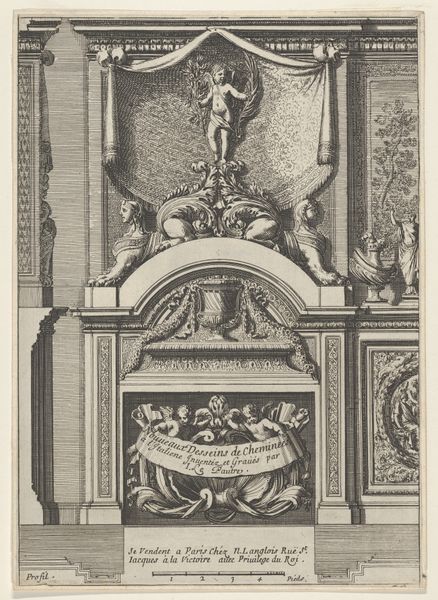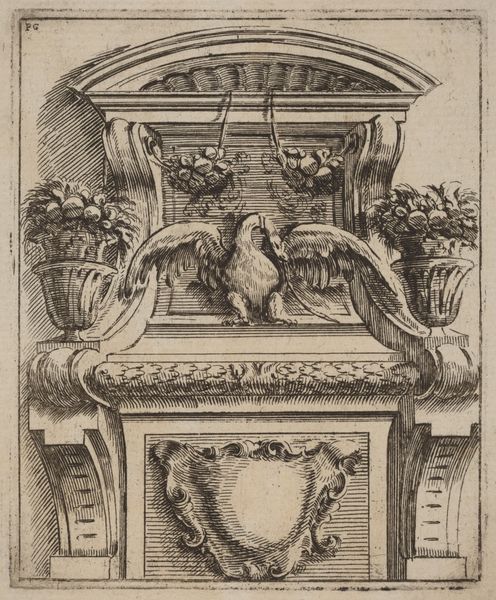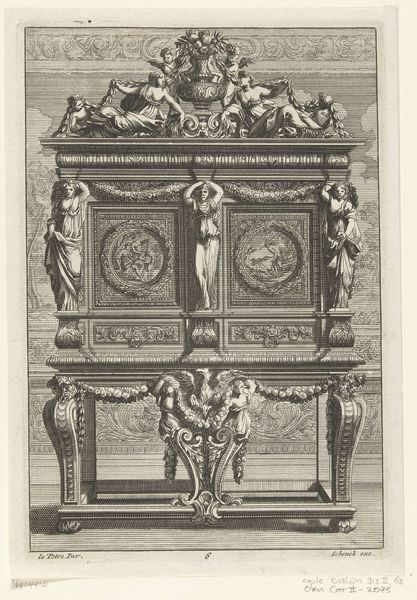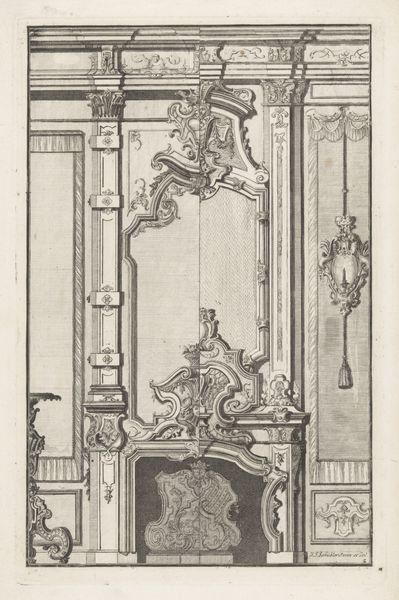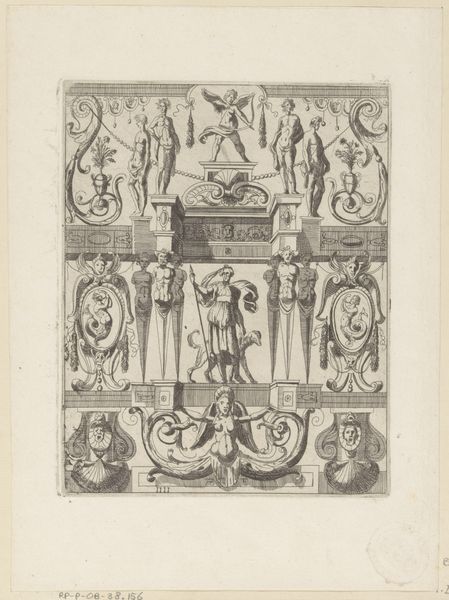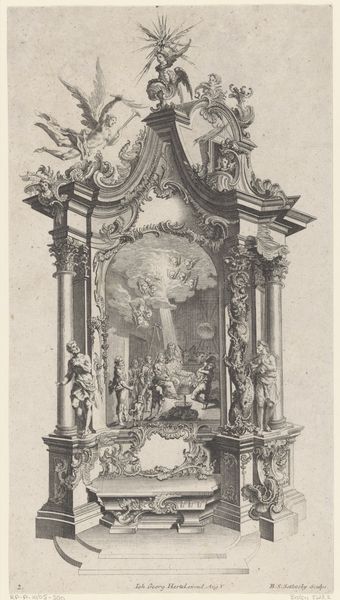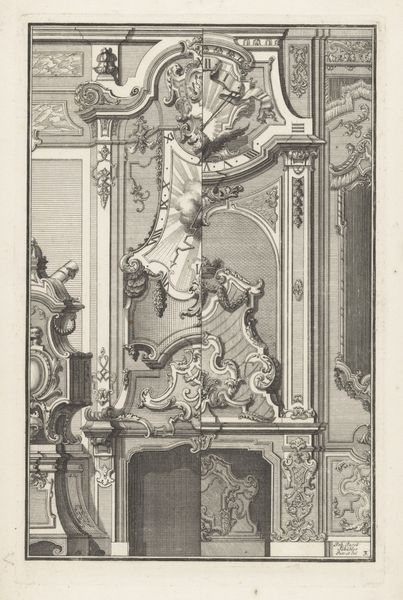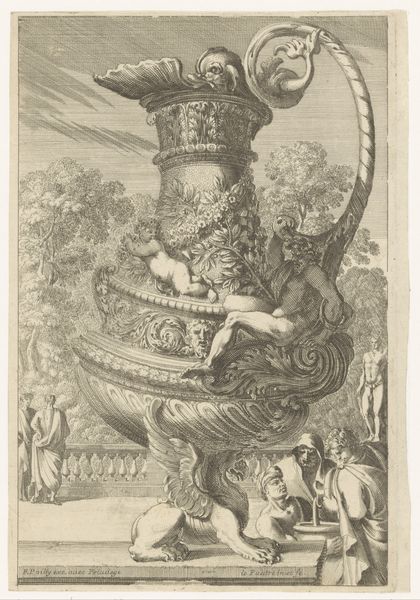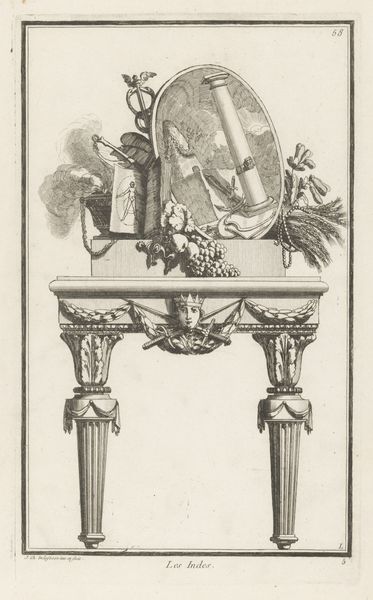
engraving, architecture
#
baroque
#
mechanical pen drawing
#
pen illustration
#
old engraving style
#
figuration
#
personal sketchbook
#
history-painting
#
decorative-art
#
engraving
#
architecture
Dimensions: height 191 mm, width 171 mm
Copyright: Rijks Museum: Open Domain
This print, "Voetstuk met halffiguren," was created in 1749 by an anonymous artist using etching. Look closely, and you’ll notice the intricate lines created by this intaglio process, where acid bites into a metal plate to hold ink. The material properties of metal as a ground for reproducible images allowed for the wide dissemination of ideas during the enlightenment. But what ideas are being circulated here? The print depicts a pedestal, shouldered by female figures, which support an inscription. The labor-intensive etching process stands in stark contrast to the themes of power and classical monumentality. Although the artist remains anonymous, we can speculate that they were working within a commercial system, catering to a market for decorative prints. Etchings like this blur the line between art and craft, challenging our notions of high and low culture. So next time you encounter a print, consider the complex interplay of material, process, and social context that gives it meaning.
Comments
No comments
Be the first to comment and join the conversation on the ultimate creative platform.
